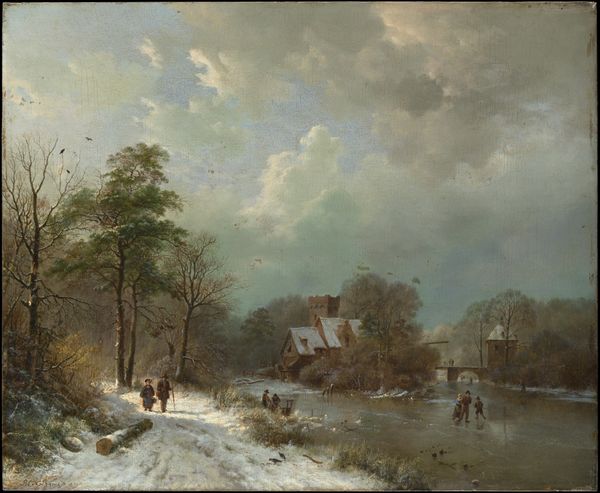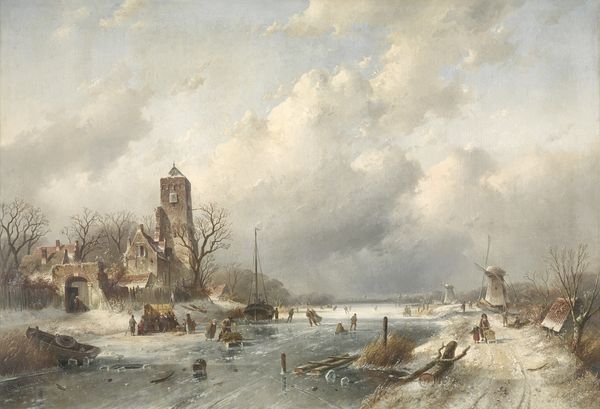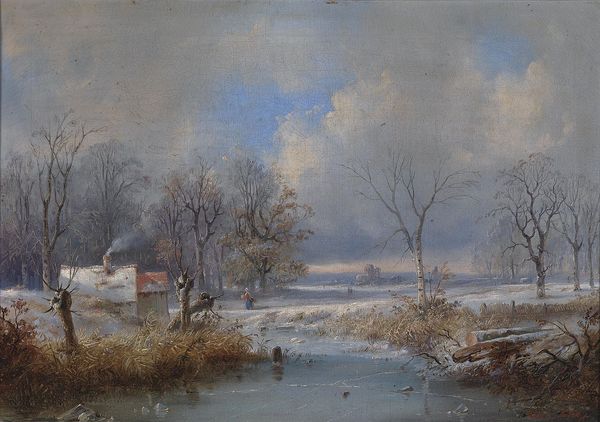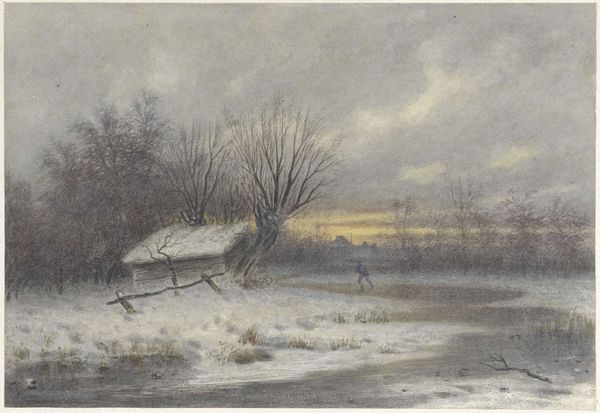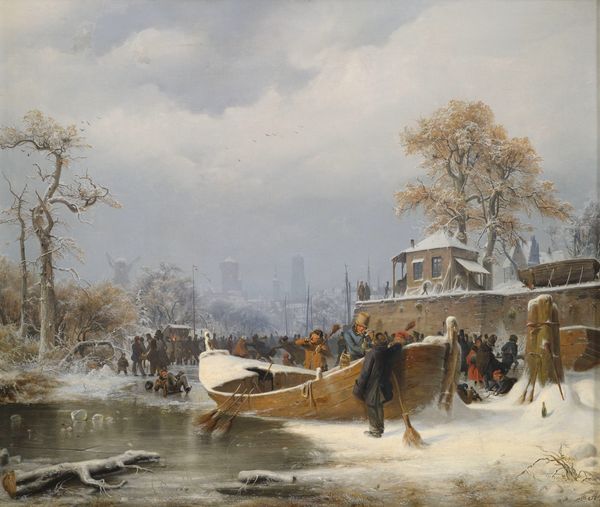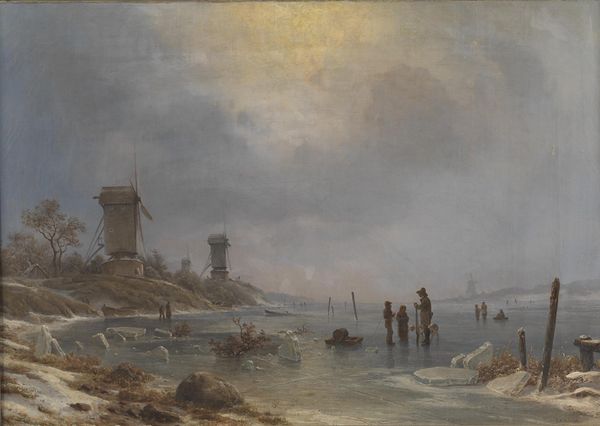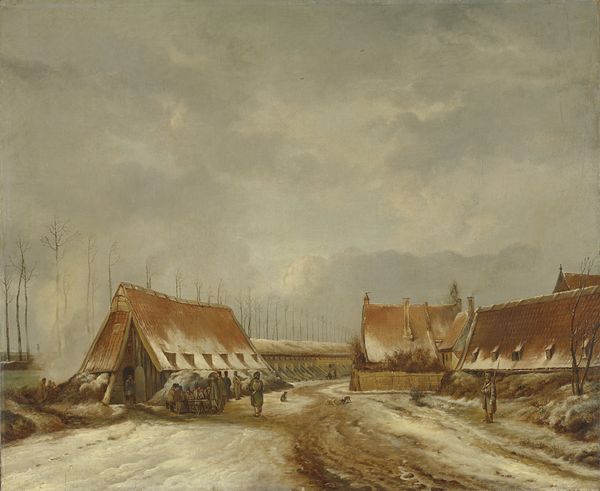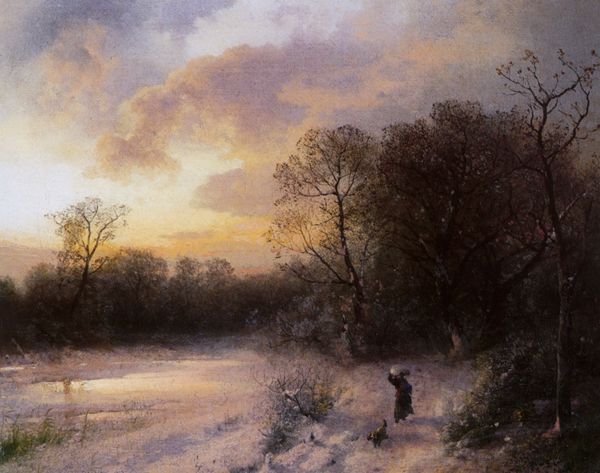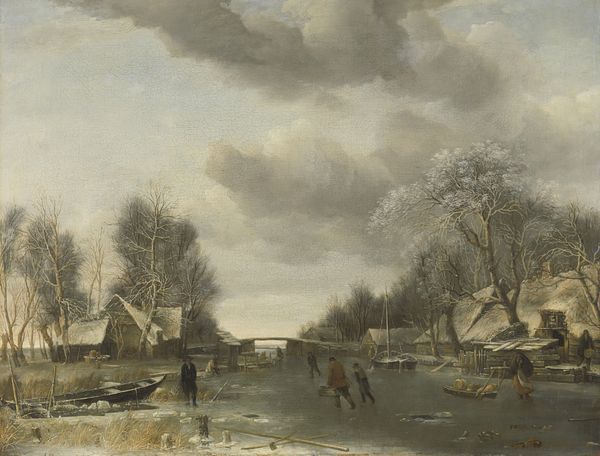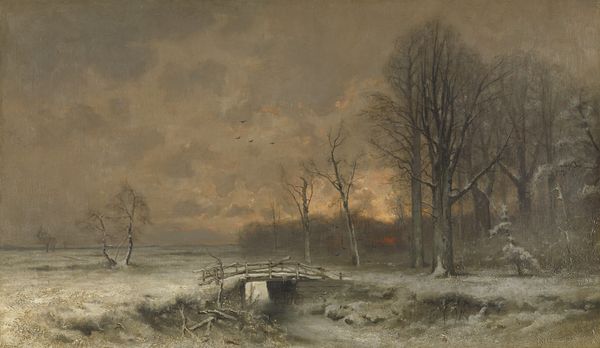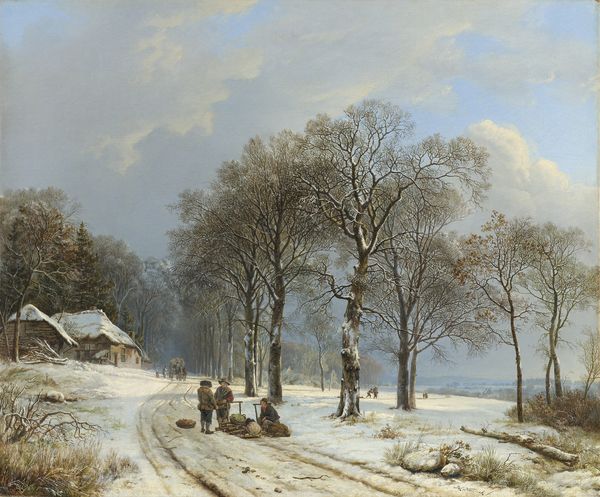
painting, oil-paint
#
painting
#
oil-paint
#
landscape
#
oil painting
#
romanticism
#
genre-painting
Dimensions: height 18.3 cm, width 26.3 cm, thickness 0.5 cm, depth 6.5 cm
Copyright: Rijks Museum: Open Domain
Editor: Andreas Schelfhout's "Winter Scene on the Ice with Wood Gatherers," painted in 1849, really captures a specific atmosphere. It’s this blend of quiet labor and leisure on a frigid winter day that strikes me. What do you see in this piece, considering its historical context? Curator: Well, let's consider the time it was painted. The Netherlands in 1849 was a nation grappling with significant socio-economic shifts. The genre painting, with the daily toil of gathering wood taking center stage alongside figures enjoying winter pastimes, becomes interesting. To me, this isn’t just a pretty landscape; it shows us a slice of 19th-century Dutch life. Does that make sense? Editor: Absolutely. It’s interesting to think about how even seemingly simple landscape paintings can tell a story about society and class. The choice of winter, with its harshness, reinforces that. Curator: Exactly. And look at the presence of the frozen canals – it isn't just picturesque. Waterways served as essential transportation routes, becoming public spaces of recreation once frozen. It creates interesting tensions between different strata in the society sharing the ice together. Does this artwork celebrate unity or highlight the inherent difficulties of survival during hard times? What do you think? Editor: I think it is more of the former - about finding pleasure amid labor and unity amid social classes... Curator: The painting is about resilience, isn't it? To think how art can both mirror reality and offer a perspective shaped by social narratives... I’ve gained a renewed appreciation for it! Editor: Me too. Thinking about this piece within its time gives the seemingly mundane scene so much more depth.
Comments
No comments
Be the first to comment and join the conversation on the ultimate creative platform.
